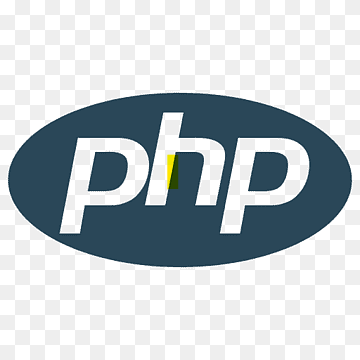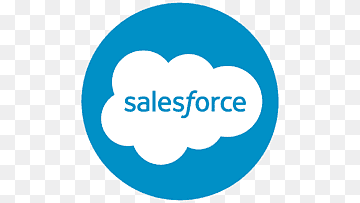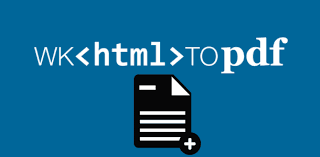Generate Dynamic PDF with Data
 Arrify
ArrifyWhat is a Dynamic PDF?
When a PDF is produced from a data feed that is not created specifically for that purpose but rather feeds data from various sources, it is referred to as a dynamic PDF. Dynamic PDFs are also more effective because they can be made in real-time using current data and are more restrictive, while static PDFs are pre-developed PDFs that cannot be changed. Their usage is thus relatively handy in places where papers need frequent revisions or even when changes are localized.
They contain text, images, tables, graphs, hyperlinks, forms, and anything else that is embedded in a PDF document that isn’t necessarily static. Thus, it is possible to ensure that the final document meets a specific need of the user or a particular business process, the content of the document and its layout are adjusted to the input data.
Technologies and Libraries
A number of technologies and frameworks are used in the process of creating dynamic PDFs, which fetch, process, and render data. These fall into three main categories: template engines, PDF-generating libraries, and server-side technologies.
Server-side Technologies
Server-side technologies play a crucial role in handling data processing and the logic required for generating PDFs.
Some of the commonly used server-side technologies include:
Node.js

Node. The next JavaScript framework is js which is a runtime developed on top of the Chrome V8 engine. It is known for not blocking execution and making use of the event system, which is useful for creating scalable applications. Node. Js can help in the generation of dynamic PDFs using a library like PDFKit.
Official documentation of Node.js
Python

Python is essentially an object-oriented structural language that is simple to comprehend as well as to adapt. In terms of PDF generation, it has several libraries that include ReportLab and PyPDF2, among others. Python is a widely spread language applicable in many tasks, as it is applicable to developing dynamic PDFs.
Official documentation of Python
PHP

PHP is one of the most famous and commonly used interpreting programming languages for making web-based applications. PHP programs have libraries such as TCPDF and FPDF to easily create dynamic pdfs depending on the needs of their developers.
Official documentation of PHP
Java

Java is a strong language for developing an application, and its basic concept is object-oriented programming Java has libraries to create PDFs, such as iText and Apache PDFBox. Java also provides a plethora of community support and functionality portability, making it a good choice for implementing PDF.
Official documentation of JAVA
Salesforce (Apex, Visualforce)

The widely used and apparently incorporating functions and universal customer relationship management (CRM) software, Salesforce, has multiple capabilities, such as Apex, which is the specific Salesforce code language and Visualforce which is a framework for building a unique interface to generate, PDFs just in time. However, as we know, there are also software libraries that can be integrated with Salesforce which include Conga and Apache FOP for instance.
Official documentation of Salesforce Apex
Official documentation of Salesforce Visualforce
PDF Generation Libraries
PDF generation libraries are essential for converting data into a PDF format.
Here are some of the widely used libraries:
wkhtmltopdf

wkhtmltopdf is a command-line tool that uses Webkit (the rendering engine used by Safari) to convert HTML documents to PDFs. It is highly effective for generating PDFs from web pages and HTML templates.
Official documentation of wkhtmltopdf
PDFKit (Node.js)

PDFKit is a JavaScript library for Node.js that allows developers to create complex PDF documents with ease. It supports various features, including text, images, vector graphics, and more.
Official documentation of PDFKit(Node.js)
iText (Java)

iText is a powerful library for creating and manipulating PDF documents in Java. It provides extensive features for generating PDFs, including support for text, images, annotations, and interactive elements.
Official documentation of iText(Java)
PDFSharp (.NET)

PDFSharp is a .NET library for creating and processing PDF documents. It offers a straightforward API for generating PDFs and is well-suited for applications built on the .NET framework.
Official documentation of PDFSharp(.NET)
Salesforce Libraries (Conga, Apache FOP, etc.)

Salesforce provides specific libraries, like Conga and Apache FOP, for PDF generation within its ecosystem. These libraries are tailored to work seamlessly with Salesforce data and workflows.
Official documentation of Apache FOP
Official documentation of Conga
Template Engines
Template engines simplify the process of generating dynamic PDFs by allowing developers to create templates with placeholders that can be replaced with actual data at runtime.
Some popular template engines include:
Handlebars

Handlebars is a JavaScript-based template engine known for its simplicity and logic-less templates. It is often used with Node.js for generating dynamic PDFs.
Official documentation of Handlebars
Jinja (Python)

Jinja is a powerful template engine for Python that provides a rich set of features for creating dynamic content. It is widely used with Python web frameworks like Flask and Django.
Official documentation of Jinja(Python)
Twig (PHP)

Twig is a flexible, fast, and secure template engine for PHP. It allows developers to create clean and readable templates that can be used to generate dynamic PDFs.
Official documentation of Twig(PHP)
Mustache

Mustache is a logic-less template engine available for various programming languages, including JavaScript, Python, and Ruby. It helps in creating templates that can be reused across different projects.
Official documentation of Mustache
Salesforce Visualforce

Visualforce is a framework provided by Salesforce for building custom user interfaces. It can be used to create templates for dynamic PDFs, leveraging Salesforce data and logic.
Official documentation of Salesforce Visualforce
Conclusion
Producing dynamic PDFs is one of the ways to create new and updated documents that can be used in many ways. PDF generation is just a glimpse of what is available in today’s market; by enabling the right server-side technologies, PDF generation libraries, and template engines, developers will achieve what they need, in regards to dynamic PDFs. Whether you are using Node or not using Node but the Node package, you are using Node. Whether you are using JS, Python, PHP, Java Salesforce, and so on, there are many available tools for generating PDFs. Select the technologies and libraries for your job, and start generating effective PDFs with actual-time conversions as of now.
Subscribe to my newsletter
Read articles from Arrify directly inside your inbox. Subscribe to the newsletter, and don't miss out.
Written by
